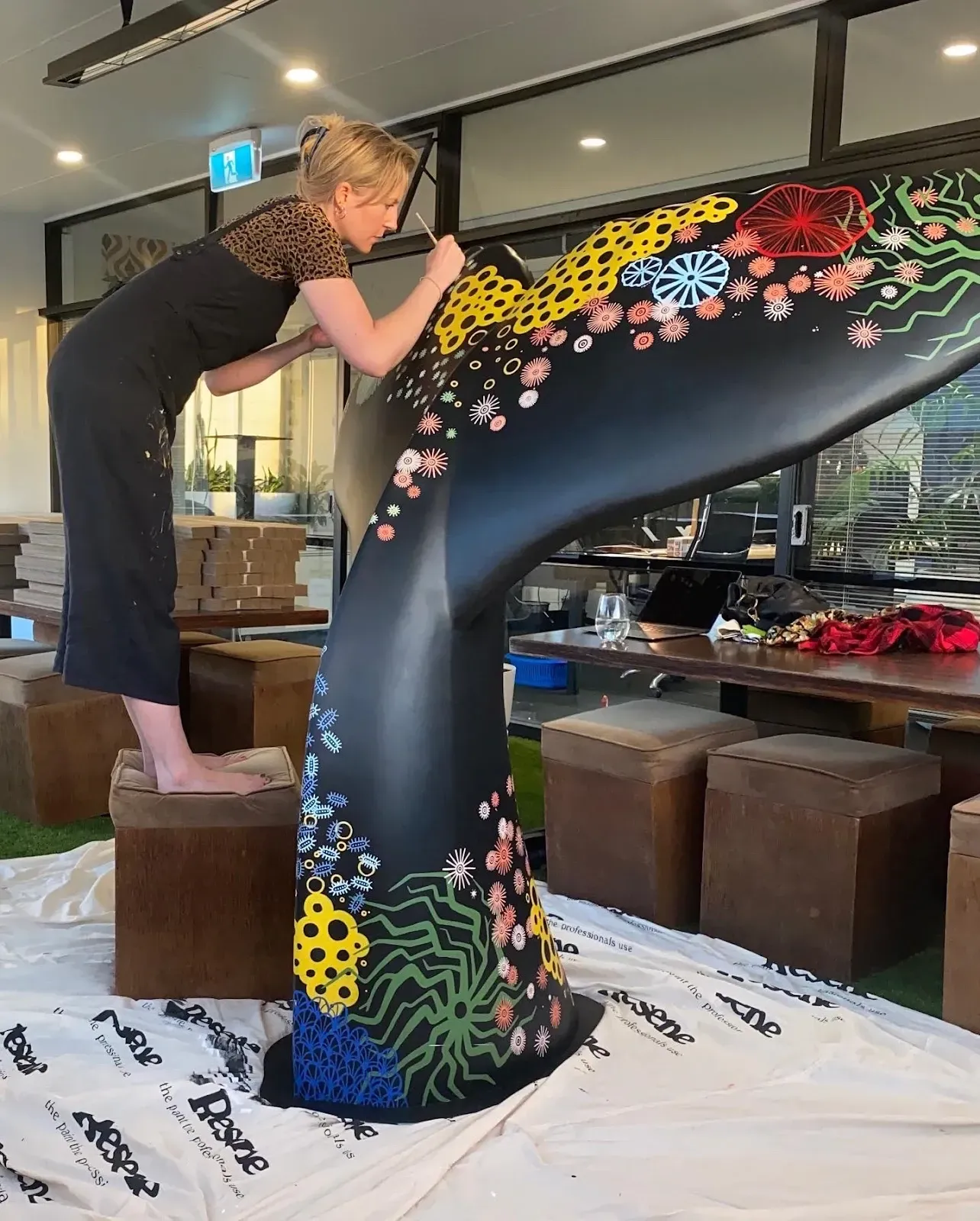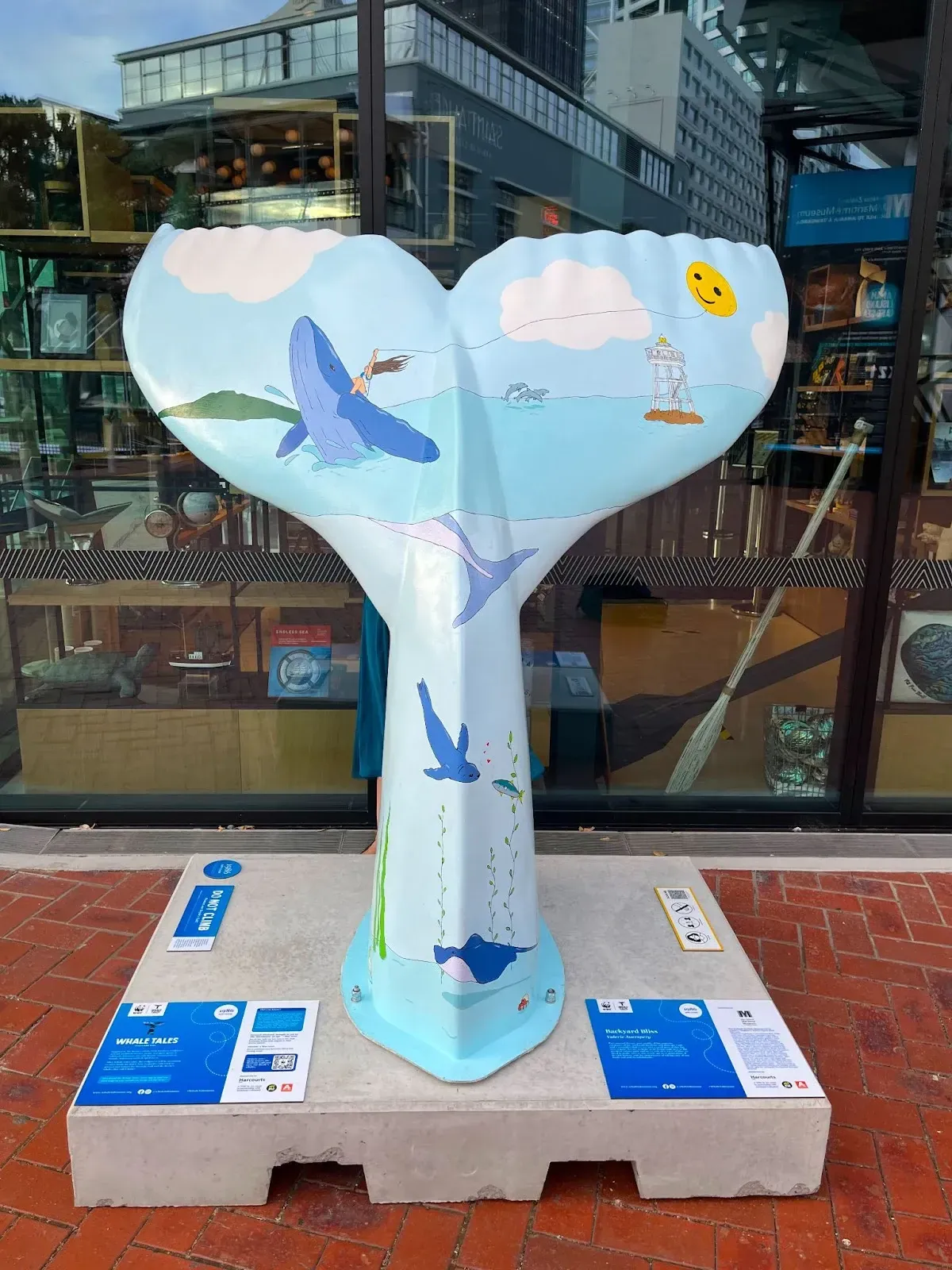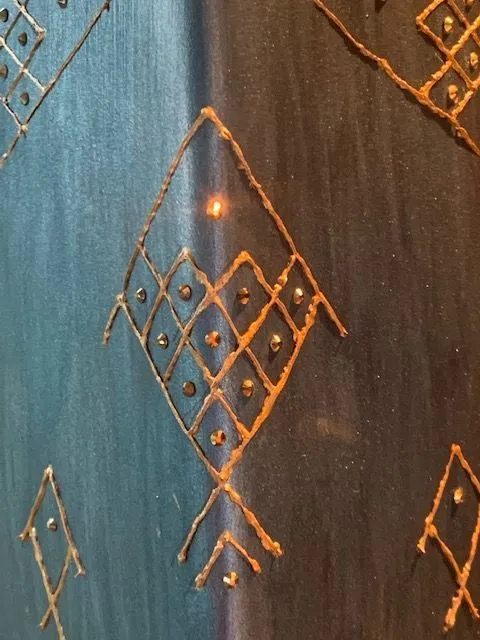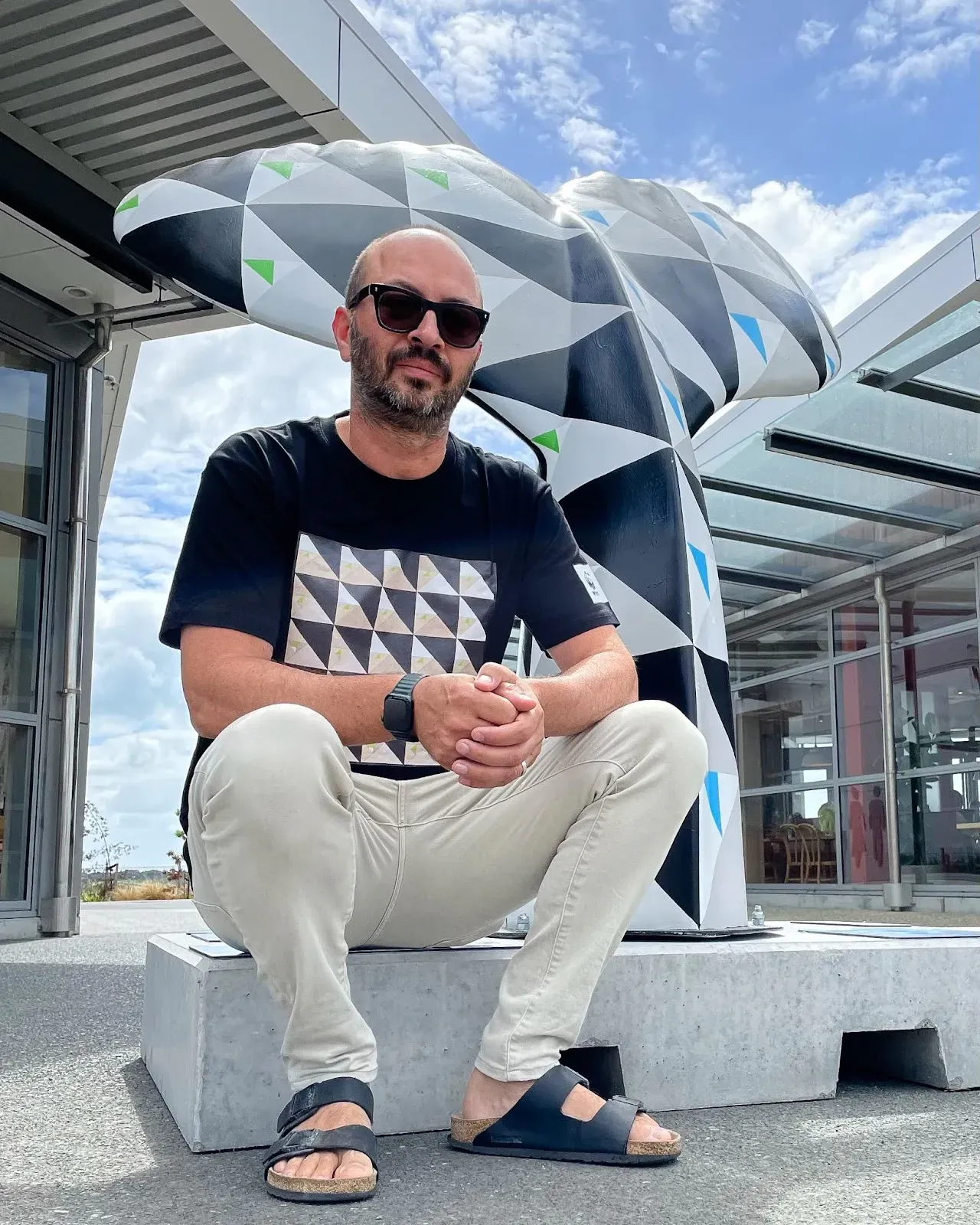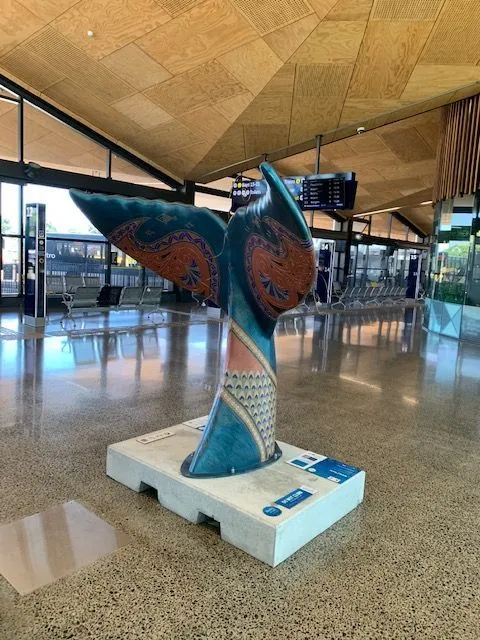Whale of a Time
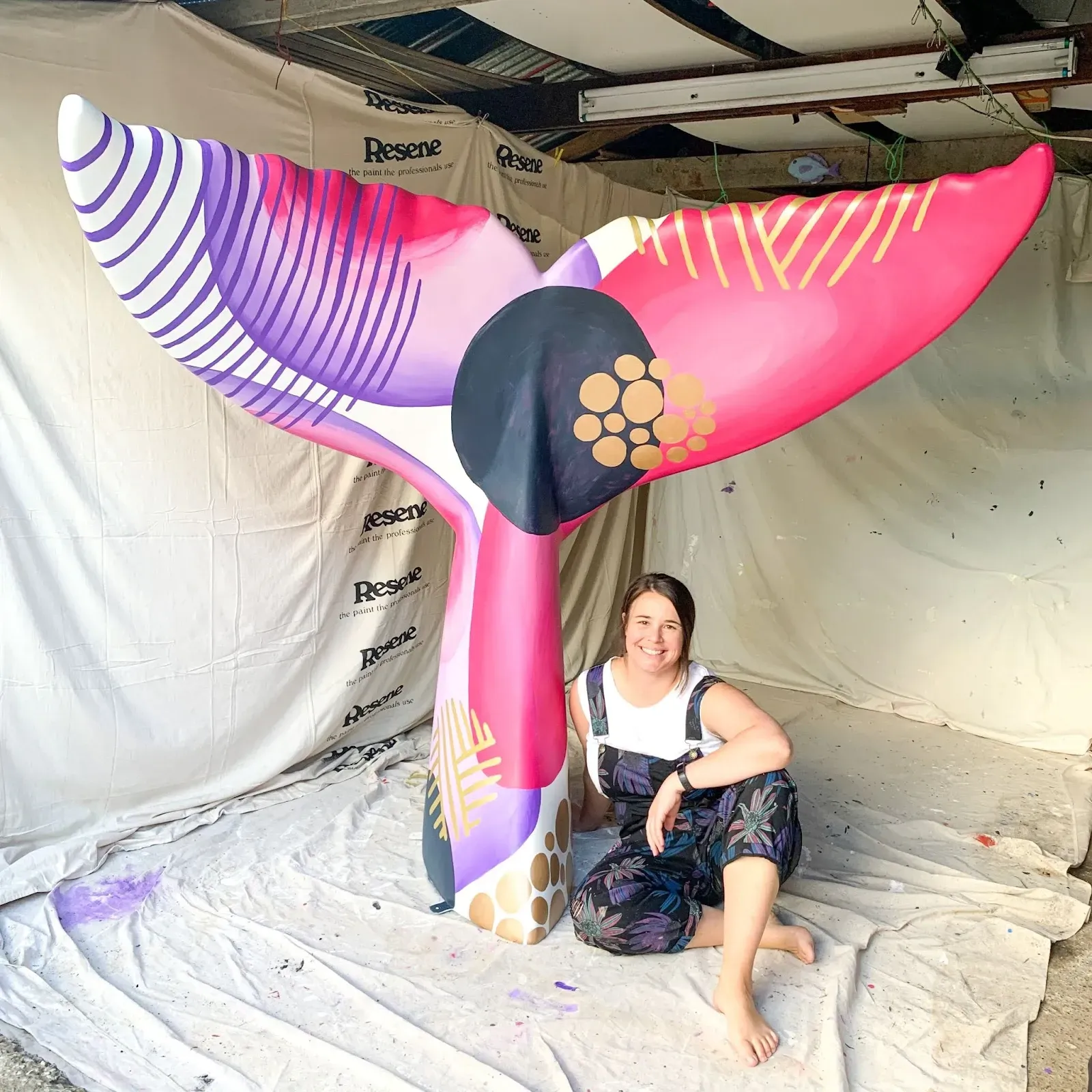
Here comes the Brydes
Whale watching on the streets of Tāmaki Makaurau might sound like a tall tale but thanks to the creativity of local artists, many Aucklanders will spot one before summer’s end.
Whale Tales 2022 is a public art trail of unique sculptures dotting the streets of Tāmaki Makaurau’s city centre and beyond. In the spirit of conservation, WWF New Zealand partnered with Wild in Art to commission 80 New Zealand artists to paint 80 whale’s tails for public display.
The tails celebrate Tāmaki Makaurau's distinct ecology, calling attention to the importance of restoring the mauri or life-force of our seas and taonga species’.
Highlighting Tīkapa-Moana (the Hauraki Gulf), and its most elusive resident, the Bryde’s Whale (pronounced “Broo-dus”), the sculpture trail will bring this lesser-known species to the fore.
With only 135 remaining, they’re critically endangered.
The trail will be viewable until the end of April when the tails are auctioned, with the proceeds going to WWF's mission to save the Bryde’s Whale.
Beginning with identical two metre tall statues, each artist has taken a radically different creative approach to the sculpture.
Five artists from the Toipoto Programme, Kerri-Ann Graham, Kate Hursthouse, Paul Nathan (Bonco), Valerie Auersperg and Louis Bretaña share their experiences as artist contributors in this event.
Te reo Māori for ‘closer together’, Toipoto is The Big Idea’s artist-led mentorship programme, a pilot of MSD’s Creative Careers Service, that helps Kiwi creatives find success and self-employment in the creative sector.
Graham’s window to the shoal
Observing events producers Wild in Art turn out public art trails around the city for years, artist Kerri-Ann Graham (Ngāi Te Rangi) leapt at the chance to contribute.
From small print to sculpture, Graham transitioned from little to large and asked questions later, satisfying a creative urge in the process.
“When I saw the call for artists on The Big Idea, I knew I had to apply. Most of my work is small scale print and I’ve been itching to work on something bigger, like a mural.
“This definitely hit the spot.”

Kerri-Ann Graham at work on Trypophobia. Photo: Supplied.
Graham’s Trypophobia is a colourful close-up look at life below the surface with an abstracted coral reef. Home to many sea critters as well as natural carbon dioxide regulators, it was a fitting symbol for a tale of vitality and regeneration.
A significant upscale, Graham played to her strengths of bold, vibrant tones and organic shapes on a crisp black surface. Resembling a rockpool from a technicolour dream, the organic nature of her form allowed her to prioritise colour and precision.
“When it was time to paint, I had to think about how the design would translate to a sculpture, but because my tail is an abstract pattern, I didn’t have to worry.
“My biggest priority was finding paint to match my palette, and achieving nice clean lines.”
Graham’s design draws parallels between environments, the submerged cities unseen and the ‘City of Sails’ so many call home. It reminds us to pay mind to both.
“I can’t think of a better way to draw attention to important environmental issues than using interactive art.”
You can find Trypophobia at the Meadowbank Shopping Centre.
Hursthouse keeps it bouyant
Kate Hursthouse took an impressionistic and spirited approach with her tail A Splash of Colour, painting a hefty two metre sculpture that feels - somehow - light.
Motivated by her love and commitment to art in the public sphere and the joy it brings the community, Hursthouse enjoyed her second time on a Wild in Art trail.
“I think public spaces need more art,” Hursthouse declares, having cherished her experience in the Big Hoot Owl art trail in 2018.
“I love seeing the public get involved and enjoy the sculptures. It’s great how the trail is interactive with an app, and it’s really fun to find the tails and see other artists' amazing work.
She’s enthusiastic about joining local organisations in their effort to protect our natural environment too, both through awareness and funding.
“I love the focus this is bringing to the Bryde’s Whale, and that all the sculptures are auctioned off to support WWF and the work they do to look after our ocean.”

Kate Hursthouse posing with A Spash of Colour. Photo: Supplied.
The artist – whose work aims to help women find calm and through colour – says she wanted to capture the movement of nature with her piece.
Working with tempered tones and abstruse shapes and lines on a stark white base, the elements clash with and complement each other - almost in a game of their own. It’s calming and fun too.
“My design is an abstract interpretation of the bubbles produced by whales when they’re communicating, playing in the water. Like small children– young and carefree.
“The bright colours and patterns give an essence of fun that whales seem to have when breaching, spinning, and flicking their flutes.”
You can find A Splash of Colour at the Lightpath.
Bonco’s Comet lands in Tāmaki Makaurau
Known for his exploration of geometric abstraction, Paul Nathan (Bonco) had to turn his metaphysical technique (and physical self) upside down to actualise the esoteric design of his tail, Comet.
Forced to swap his standard textiles with plastic and oils with acrylics, Nathan was at sea.
“It was totally the opposite of how I work,” he says.
“I paint in oil on linen, this was acrylic on fibreglass. With oil paint, it is very slow and time becomes part of the process. Acrylic dries very fast.”
The contour and size of the tail posed challenges of its own too.
“I usually work on smaller canvases that I can repeatedly turn on an easel so as to use the same hand movement for my brush stroke.”
With the sculpture beached, Nathan had to physically move himself around the large cast instead.

Paul Nathan (AKA Bonco) with Comet. Photo: Supplied.
“I had no chance of moving the tail, I had to manoeuvre and contort myself so I could actually paint what I had intended, sometimes even having to use my left hand.”
Inspired by the passage from Genesis 15:5 when God sends a doubtful Abraham out to count the stars in the night sky.
“It is an impossible request, but one that is full of symbolic meaning. ”
Nathan’s tale speaks to both human ability and limitation.
“Looking to the stars is about contemplating our existence in the universe.”
Dwarfed by the sculpture just as Abraham was by the celestial body, the transmutation of Nathan’s usual process and technique is emblematic of a great shift in perspective. One that tells us: The obstacles aren’t too big, we just need a new approach.
“It’s about how we may ground ourselves and consider what we leave behind for future generations.”
You can find Comet at Stoneridge on Lunn.
Auersperg is riding the wave, for now
Cushioned by nostalgia and sweet nonsense, Valerie Auersperg’s dreamy Backyard Bliss harbours a compelling and poignant message.
In a pastel toned surrealist pool-party, a gleeful beach-goer rides upon a whale (yellow smiley face balloon in hand) while dolphins leap before Rangitoto from a baby blue sea. Below the surface, a ray rests on the seafloor while a seal and a fish share a romantic moment. On the reverse side, a sandcastle.
Speaking to human joy and ignorance, Auersperg's piece attends to our borrowed bliss. We are riding a wave that will, as waves do, crash.
“The next generation is symbolised by the sand castle on the back of the tail."

Valerie Auersperg's Backyard Bliss. Photo: Supplied.
Auersperg wants her piece to be a reminder that while, yes, we are lucky enough to live and play in this paradise, we are just a single part of a vast ecosystem.
One that must be sustained for future generations, and it’s our responsibility to look after it.
“As we ride this wave of bliss, we need to make sure to also teach our next generation of nature and its rich history and the importance of taking care of it and it’s inhabitants.”
It was her devotion to the whales that drew Auersperg to this event, the fact that she has plenty of experience with public art was a bonus.
“I love working with public art!
“But I was really drawn to the cause... I have a slight obsession with whales. Anything to do with an endangered whale species is right up there for me.”
You can find Backyard Bliss at the New Zealand Maritime Museum.
Bretaña makes tidal changes
Filipino artist Louie Bretaña’s tail calls for the deification of sea creatures with Mailap Man ay Nariyan ang Diwata ng Karagatan or ‘Elusive But Ever Present is the Spirit of the Seas.’
Observing both Aotearoa’s indigenous roots and his own, Bretaña’s work is a tautoko to indigeneity and the symbiotic and spiritual relationship first peoples had, and have, with their environment and animals.
“It’s inspired by how indigenous cultures deified the rare and majestic creatures as guardians, treated with reverence and respect that ensured sustainable coexistence and harmony within nature.”
To return honour to the taonga species, Bretaña declares it a diwata. Rooted in Filipino folklore, a diwata is a supernatural creature that guards the most precious parts of the natural world. Much like our taniwha.
“By presenting the whale as a diwata, I will reignite the reverence and respect for them and the seas.”
His own abstractions of indigenous, pre-colonial Philippine pintados (painted ones), Bretaña’s designs hark to the belief that tattooed markings hold specific power for the wearer.
“Scale patterns mean protection and immortality, waves, cursives and crystals symbolise the power of the ocean. Sea creatures face every direction to show the extent of the diwata’s domain.”
The details are gold and tactile upon deep teal, indigo, burnt orange with crystals suspended symmetrically on fine spirals. The piece required very fine work in a very short time.

Louie Bretaña's Mailap Man ay Nariyan ang Diwata ng Karagatan. Photo: Supplied.
“The project time frame was daunting because I work with very fine detailing. It was something I was not willing to compromise on. The idea demanded it.”
Appeased Bretaña says the whale – now a diwata – deserved such effort.
“I’m happy to have achieved what I set out to do, a representation that is truly worthy of a majestic and magical creature.”
You can find Mailap Man ay Nariyan ang Diwata ng Karagatan at the Manukau Bus Station.
A gathering of chiefs
In March, the existing sculptures will be joined by another 80 pēpi sculptures, mini tails painted by Kiwi kids. 160 total, there will be more Brydes’ Whales gathered on the streets of Auckland than in our seas.
But we won’t let the tide go out on them.
How do you get involved? Well, if you’re in Auckland, you already are.
The tails have been kicking around every region of Tāmaki Makaurau since January and they’ll be here for another few weeks yet. Immersive, interactive and free, you can follow the trail map, download the app and learn the tales as you go. Or move intuitively through this extraordinary testament to the taonga species.
A gathering of whales in te reo Māori is te kāhui parāoa, and so is ‘a gathering of chiefs’. So while they stand on the streets of a city blessed with 4000km of coastline and over a thousand beaches, bear witness to this extraordinary hui.
